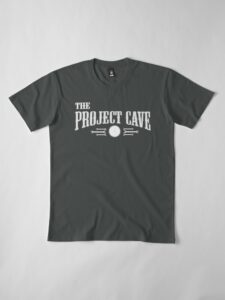My wife dislikes wallpaper. Not a fan at all. The bathroom in our home is papered. She started picking at the wallpaper. I begged her to stop doing this. Then while I was away, she attacked it with some gusto. Ultimately, this just left a mess of torn paper and a ton of residual wallpaper glue. Now what the bathroom really needs is to be redone. However, with money a little tight, a full bathroom renovation is out of the question. So, I have to resort to a much less expensive alternative.
Now don’t get me wrong. These methods aren’t perfect. After all the wallpaper and glue are removed, I plan on adding a skim coat of spackle over the drywall to even it all out. So here are the methods I used for removing the intact wallpaper and the glue that was left behind.
The Steam Method
When you are initially taking down the paper use a steamer. It will penetrate the paper and loosen the glue so the wallpaper can be removed in complete sheets. This minimizes tears in the paper and leaves very little, if any, paper behind.
I used a power steamer with a special square head specifically designed for wallpaper. And it worked like a champ. Make sure you have some extra towels around. The steam will condense into water and flow down the wall.
If you are going to use this method, use extreme caution and follow all safety precautions in the instructions. Steam hotter than boiling water and can cause severe burns.
Find the seams on each side of the piece of wallpaper you want to remove.
Place a towel along the floor at the bottom of that piece.
Once the water is up to temperature, starting at the top, place the head of the steamer on the paper next to the seam.
Blast it with steam and work your way across the paper to the other seam. This step will soak through the paper and loosen the glue.

Begin to peel the paper back at the corner and work your way toward the other seam. Remember not to just yank the paper down. Peel slowly. It will only peel down as far as you hit it with the steam. You may need to use a spackle knife or scraper to help remove some of the paper. Be gentle. This is where you can easily cause some tears in the drywall.

Once you have peeled as much as you can, repeat the process starting where the paper is flopping over.
To see a video of this method in action, CLICK HERE! It will take you to the YouTube page!
When the piece of wallpaper you are removing gets too long, use a utility knife to cut away the excess so you may continue working.
A lot of water is put out, so those towels I mentioned are a must. Also, be prepared for the wallpaper to be a little sticky. The steam softens the glue, and it wants to stick again.
Vinegar and Water
The glue and paper scraps left behind were the more difficult thing to deal with. They were stuck to the wall and structure provided by a complete and undamaged sheet of wallpaper was gone. Trying to use the steam then just made a mess and didn’t really succeed in removing anything from the wall.
So now, I switched to the vinegar and water method. Vinegar is a miracle. Can be used for so many things. Rust removal, cleaning stainless steel, other cleaning jobs, making food extra tasty, etc. A quick search can reveal tons of ideas. It is also a miracle if you are looking for something that dissolves wallpaper glue.
As you now know, vinegar shines here as well. My process for the removal of the wallpaper is to use a spray bottle with a mixture of 1 – 1.5 ounces of vinegar to every 16 ounces of water. Spray this onto the paper until it is saturated, starting at the top. Once the liquid has soaked in, slowly begin to peel the paper from the wall. A spackle knife may help.
I am using a plastic spackle knife. I rounded the corners with one or two quick passes of sandpaper attempting to prevent the corners of the knife from digging into the paper layer of the drywall.
Be patient. This takes a bit of time, but it can give a great result.
To get rid of wallpaper glue and paper shreds that were left from the dry peeling that happened while I was away, I use a slightly different method. I work in small sections and spray the area with the vinegar and water mixture. You do not need to use as much water compared what you need for intact wallpaper. This is a little bit of trial and error.


Once I have sprayed some water, then I use the spackle knife to gently scrape the glue and paper scraps from the wall. This method worked well for me and while damage to the wallboard did occur, it is something I could deal with.
For damage to the drywall that did occur, I hit any exposed paper with some sandpaper and then I used an oil-based rattle can primer to seal that up. After all of this was complete, I put a skim coat of spackle on the drywall. When that was dry, prime with an oil-based primer and then paint!


You can see in these pictures, a side-by-side comparison. The walls had a bit of damage, especially the smaller wall outside the shower. But with some patience, they can be saved. I had to paint them because I needed some validation. The walls will be fine for a few years until we can afford the renovation.





